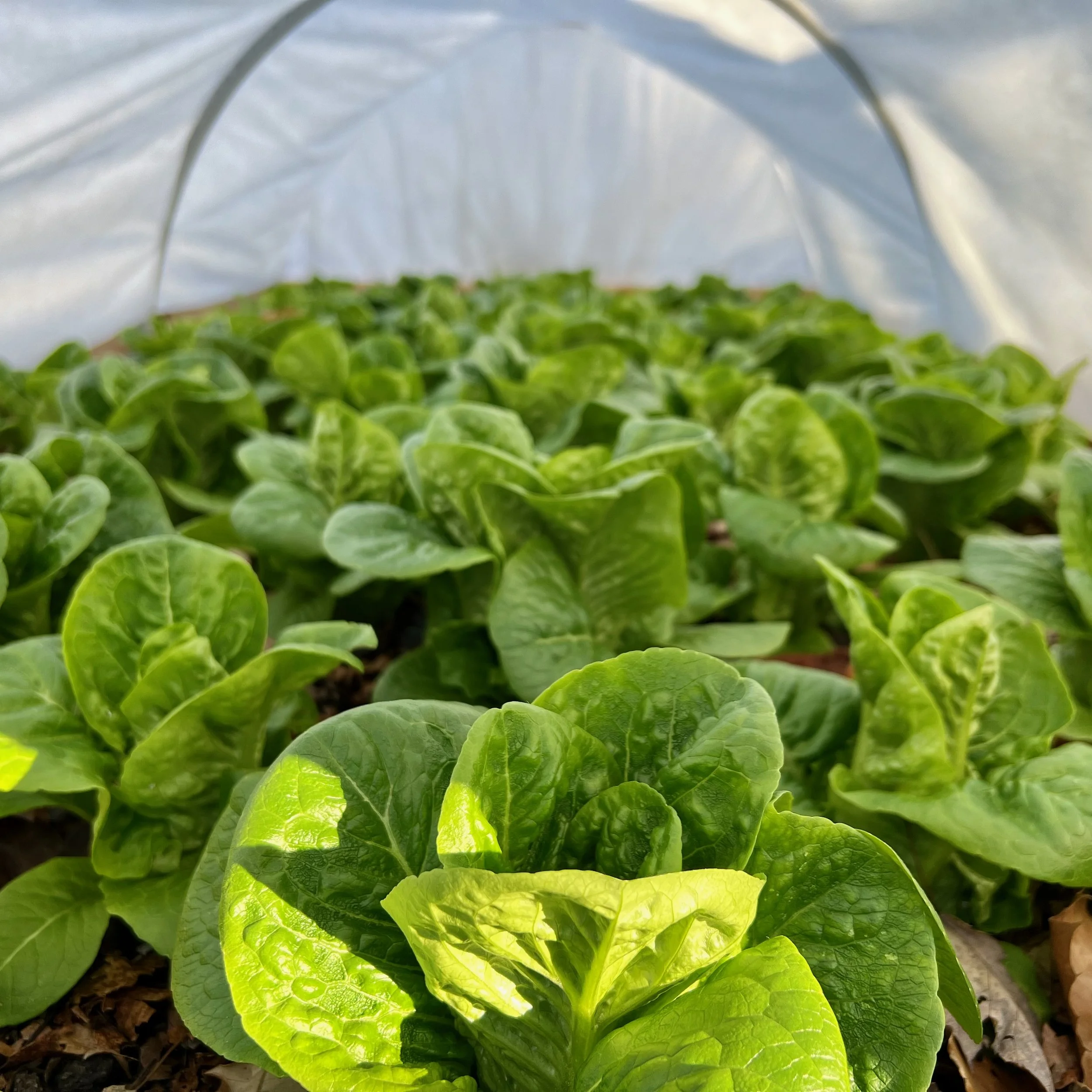Creating the Perfect Microclimate
by Kymisha Montgomery, CGC Urban Agriculture Coordinator
We all know and love the variety of crops we grow during the blistering hot months of summer. One of my favorites is zucchini. Not because I love to eat it so much, but because growing it comes with so many challenges. Don’t get me wrong, I typically end up with a few pounds per plant, but those squash vine borers pull on my heartstrings. Trying to beat them before they burrow into my stems, decimating my entire plant each year, is exciting to me in a weird kind of way. I haven’t found a foolproof method or pest management process yet, so I just plant a seed next to my transplant and keep an eye out for the eggs underneath my leaves. Harvesting okra at the perfect length—before it gets too long and isn’t edible—is another challenge I sign up for each year.
My latest obsession is creating microclimates to increase the time I have growing food here in Cincinnati. Trying to beat Mother Nature’s clock by starting earlier in the Spring and extending my season into the Winter is what I call fun. Creating small pockets where the air and soil get warm faster or stay warm longer around my garden—in other words, microclimates—gives me the opportunity to do just that.
There are several ways to create a microclimate in your garden. I like to use the companion planting or intercropping method the most because I’m trying to use more eco-friendly materials and techniques. With the lack of rain and the relentless heat we’ve been experiencing, it can be very beneficial to plant larger crops next to shade-loving crops. This helps retain water and keep your soil moist longer.
To start my gardening season early, I create a microclimate that allows for my soil to warm faster by reusing a large piece of black plastic that I lay directly over my soil. This heats the soil up a few degrees in preparation for my seedlings, which I have growing indoors under grow lights. By the time early April comes, I’m transplanting outdoors in hopes of an early harvest in May for my brassicas.
To stretch my season into the early Winter, I like to use a hoop house, low tunnel, or cold frame to keep my soil temperature higher inside than it is outside. Trapping the air inside helps keep the soil warmer and protects crops from wind gusts and cooler nights. By reusing materials such as 3-6 mil plastic, row cover or shade cloth, and metal or PVC piping each year, I’m able to keep growing lettuce and other greens well into December.
See what method works best for you in your garden to keep growing!

